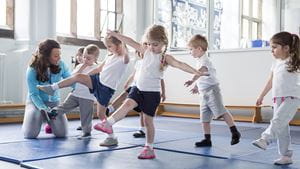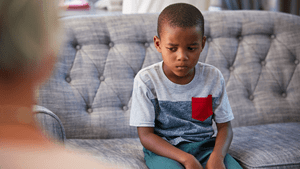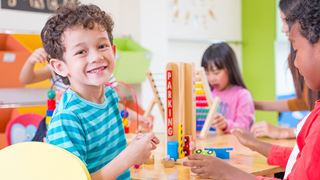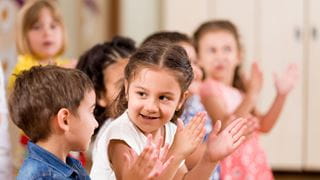Safeguarding for Teachers: How to Spot Signs of Abuse and Neglect
Education professionals (and teachers specifically) play a crucial role in safeguarding pupils because of the nature of their work. Frequently coming into close contact with children means that they are in a position to spot any signs of abuse, whether this is physical or mental, and certain legislation makes it their responsibility to report and respond to these worrying signs.
Signs of abuse can be difficult to spot in children, especially in cases of child neglect and emotional abuse. Physical abuse signs are clearer, but it can still be challenging for professionals with safeguarding responsibilities, such as teachers, to follow up on.
It can be difficult for teachers to feel confident reporting signs of abuse, especially when it comes to challenging parents or guardians about what their child is experiencing. But by identifying concerns at an early stage and following safeguarding policies and procedures in schools, the relevant help and support can be provided to help the child stay safe from abuse while they are referred to the relevant agencies.
Detecting signs that a child has been abused, either physically or mentally, can be difficult. In this article, we take a look at signs teachers can look out for if they suspect a pupil is being abused.
What Are the Signs of Physical Abuse in Children?
Physical abuse is one of the types of abuse in children that is easiest to spot in terms of its visible symptoms. However, many children are accident-prone, and cuts and bruises can simply be symptoms of boisterous play, which is why it can be hard for teachers to pinpoint whether these signs have been caused by someone else.
Some of the signs and symptoms of physical abuse in a child include:
- Bruises, especially in unusual places like the chest, neck and upper arms and legs
- Cuts and scrapes
- Burns
- Scarring
- Bite marks
- Breathing problems
As well as these physical indicators of this form of abuse, some behaviour signs are:
- A child being uncomfortable undressing for PE in front of others
- Being unable to explain their injuries
- Acting withdrawn or aggressive
- Appearing to be frightened of their caregivers
- Reluctance about returning home after school
When injuries are common or follow a pattern, and a child appears to have overall poor health, teachers have a duty as safeguarding professionals to act. These common indicators of abuse could include regular injuries after weekends or holidays, multiple injuries at a time, and suspicious fractures.
What Are the Signs of Neglect?
Neglect is one of the common types of child abuse that involves a caregiver failing to or depriving a child of their basic needs, such as food, warmth, healthcare and housing. Neglect can often develop into more serious types of child abuse, so teachers need to be able to spot the signs.
Some neglect signs and symptoms that teachers can look for include:
- Health concerns or medical problems going seemingly unattended for long periods
- Poor hygiene
- Regularly turning up to school hungry
- Body odour
- An unkempt appearance
- Inappropriate clothing
- A general lack of supervision
You might also notice behavioural signs of neglect, such as:
- Suddenly becoming clingy
- Suddenly becoming aggressive
- Changes in eating behaviour
- Loss of concentration
- Lack of social interaction
- Signs of self-harm or maladaptive behaviour
Again, it can be difficult to determine whether some common symptoms of neglect are actually being caused by neglectful behaviour, as children can be overweight or underweight due to no fault of their parents or guardians.
What Are the Signs of Sexual Abuse?
Sexual abuse is another of the different types of abuse that teachers should be aware of which can impact children or young people of any age. Should a teacher or other educational professional spot any indication of a child being sexually abused, they must report their concerns immediately in order to prevent and protect the child from further abuse.
Physical signs of sexual abuse can include:
- Regular bladder infections or STDs
- Bruising, swelling, itching, bleeding or pain in the genital or anal region
- Pregnancy in pre-teen girls
- Blood in the child's underwear
Behavioural signs of sexual abuse may include:
- A child acting in a promiscuous manner
- The child talking about sex or being touched
- Unusual knowledge of sexual topics for their age
- Refusing to undress during a PE session
- The child displaying signs of depression
- Suicidal feelings
- Regression to more childlike behaviour
Examples of Safeguarding in Schools
Schools are typically safe spaces for kids to be kids – where they can learn about the world around them, have fun and enjoy being young. But in some cases, there are certain abusive individuals who take advantage of the school setting to get access to young children, exploiting them for their own purposes.
Safeguarding training has never been more important than now to ensure the safety of students from potential abusers, whether that’s a staff member or even another student. Here are some examples of cases that highlight the importance of safeguarding in teaching and having proper processes in place to report any behaviour that appears abusive.
Weston-super-Mare, Somerset
A serious case review following the arrest of Nigel Leat in 2010 found major failings of the school staff after several charges were brought against him, including sexual assault of a child and possession of indecent images of children.
Over the course of four years between 2006 and 2010, the case review found that the school management had recorded several incidents like inappropriate lesson content and over-familiarity with students, but only a third were formally reported by the school management. It was common knowledge amongst staff that Leat’s behaviour towards students was inappropriate, even within the first year of his appointment back in 1995, with several common actions he did being identified as typical grooming behaviours.
The fact that such a low percentage of Leat’s behaviour was formally recognised raised questions about the safeguarding training implemented within the school, such as how incidents should be escalated and properly addressed. Because of the seemingly lax attitude of the school management, Leat’s continued abuse of students was able to continue without any tangible repercussions.
The North Somerset Safeguarding Children Board raised 32 individual recommendations and met with parents before the release of the report to highlight the changes which would improve how the school handled child abuse allegations and ensured similar incidents were reported and resolved.
Solihull, West Midlands
Back in 2017, a 28-year-old teaching assistant and nursery worker operating in Solihull – Jamie Chapman – was arrested for sexually abusing 18 children in different schools between 2011 and 2016, utilising social media in order to contact children outside of school hours.
Chapman created fake profiles on Facebook, impersonating teenage girls, in order to send young boys messages and convince students he believed to be vulnerable into sending him explicit images. Once Chapman had these images, he attempted to blackmail several male students into engaging in sexual acts with him by using fake profiles to convince the boys into meeting up with him.
The police eventually tracked down Chapman using information pulled from the fake profiles he’d used to uncover his identity and bring a vast amount of evidence against him in the form of the archived messages. Online platforms are becoming more and more prevalent in child abuse cases as they give abusers even greater access to their victims and new ways to exploit them, such as the blackmail threats made by Chapman.
Social media companies are seeing a rise in abusers using these platforms to facilitate child abuse, with 11.6 million pieces of content linked to child abuse and exploitation taken down between July and September 2019 alone. It’s never been more important than right now to educate children on the dangers the internet can present and how to identify methods used by abusers to take advantage of them.
Teachers and parents also need to be aware of safeguarding procedures in schools specific to online safety and spot signs that children may be experiencing abuse via social media channels.
London, Greater London
The parents of “Bella” - a six-year-old girl attending a school in London - have called for a record to be established to address sexual abuse committed between students after their daughter was abused by two male students for six weeks.
While the recent update to the statutory guidelines introduced by the Department of Education explained to teaching staff what types of sexual abuse to be aware of, including peer-on-peer abuse which Bella suffered, there was no reporting mechanism introduced to record incidents and no enforcement to ensure teachers read the updated guidance.
There had been two instances of teachers walking in on the abuse occurring, but they had told Bella off for being “a silly girl”. This shows the importance of teaching staff understanding what different types of abuse look like, as incidents like this should never have resulted in this type of response.
Anyone working in a school needs to be aware of all safeguarding measures and information, as well as the types of abuse that children can suffer. Dismissing peer-on-peer abuse is just as bad as dismissing any other forms of sexual abuse claims, and it’s the responsibility of everyone around children to report any sexually abusive behaviour.
The Metropolitan Police reported that reports of sexual assaults on children under 13 by other children had increased by 6% over the last year, with the children’s commissioner saying that leaving it to chance how schools interpret official guidance on abuse wasn’t good enough. As schools aren’t legally required to report safeguarding incidents, it can be hard to understand the scope of different abuse forms in schools, but the advice is there for schools to use in order to help prevent or report any incidents.
FAQs
Why is safeguarding important in schools?
Safeguarding in schools is important because it plays a vital part in keeping children safe. When children come to school this may be the only time that they are separated from the person perpetuating the abuse, and it is vital for teachers and education professionals to be able to spot the signs or create a space where children feel that they can share what might be happening to them.
Another reason for the importance of safeguarding in schools is that teachers have a legal obligation to protect the children they work with, which includes intervening if they believe child abuse is taking place. Teachers, social workers and other professionals with a safeguarding role must comply with the government's latest guidance for schools in this area to protect the children in their care and avoid serious consequences.
When should a teacher report child abuse?
Any incidents, suspicions or disclosures of child abuse should be reported by teachers. Suspected safeguarding signs of abuse or slight concerns should be followed up on straight away so that intervention can be put in place as soon as possible and the escalation of this potential abuse can be prevented.
As a teacher, you should report any concerns you have no matter how minimal the signs of abuse seem. Waiting until these signs are clearer, or dismissing your worries and saying nothing, could put a child significantly at risk, so you should always mention concerns as soon as possible.
Who do teachers report child abuse to?
If you’re a teacher with concerns about child abuse, you should report these concerns to the teacher in your school that is the designated safeguarding lead. This safeguarding professional will then report this to the police or local safeguarding services depending on the severity of the case, and appropriate action will be taken to investigate the concern.
Summary
Understanding the signs and symptoms of child abuse is an essential part of safeguarding children in school. As a teacher, you have a responsibility to ensure that any concerns are reported and followed up on to keep the children you work with safe, and should keep all of the key signs of child neglect and abuse in mind so that dangerous or harmful situations are identified and addressed quickly.
If you’re interested in undertaking any safeguarding training to get a wider understanding of how to help prevent child abuse or how to spot signs of child abuse, we have several online safeguarding courses which you can take at your own pace. Our safeguarding training courses offer a wealth of information that will help you get a deeper understanding of safeguarding issues and how you can help protect children from abuse.









/safer-recruitment.jpg?mw=320&hash=A2BB5E144C89C295EC10C63680F69F39C4C3E566)




/e-safety-.jpg?mw=320&hash=A9FCF6B70F32AD3EA74633373FF0213B000F75FF)










































